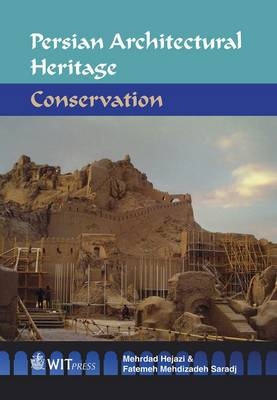
Persian Architectural Heritage: Conservation
WIT Press (Verlag)
978-1-84564-884-8 (ISBN)
- Titel ist leider vergriffen;
keine Neuauflage - Artikel merken
CONTENTS Chapter 1 Introduction Prologue; Restoration research Chapter 2 The philosophy of conservation Introduction; The philosophy of architectural conservation; The values of historical buildings; Sources of damage to historical buildings; Reasons for the preservation of old buildings; Is conservation an art or a science?; Different approaches in conservation movements; Anti-restorationists; Restorationists; Conservation principles; Documentation; Workmanshi; Style; Original view; Science and technolog; Modern approaches; Structural behaviour; Reversibility; Minimum intervention; Reintegration; Materials; Reuse of historical buildings; Funding; Answers to fundamental questions about the philosophy of conservation; Conclusions; The philosophy of structural conservation; Authenticity and conservation; Authenticity and related values; Authenticity of historical structures; Conservation to preserve authenticity values; Recommendations for analysis and conservation; Activities and phases; Diagnosis; Structural analysis; Reliability assessment; Limited applicability of conventional methods and codes; Engineering approach to reliability assessment of historical structures; Design of intervention; Conclusions Chapter 3 Practical experiences Introduction; The Bam earthquake of 26 December 2003; The action plan; Phase 1: emergency measures; Establishment of an ICHHTO camp in Bam; Minimum protection of the heritage assets; Compilation of information; On-site inspection; Provisional conservation interventions for safety and stability; Access of visitors to the Bam citadel; Organisation of joint UNESCO-ICHHTO high-level technical and scientific steering committee; Proposal of inscription on the World Heritage List on an emergency procedure; Recording of all actions taken; Phase 2: documentation, assessment, analysis and planning; Archaeology; Conservation and structural stability; Geological and geotechnical studie; Information management; Harmonisation of conservation and redevelopment efforts of Bam; Presentation, raising awareness and tourism redevelopment; Phase 3: long-term conservation, restoration, rehabilitation, presentation and sustainable utilisation of Bam's cultural heritage; Description of the adobe shop restoration project; Original state of the adobe shop; State of the adobe shop before the earthquake; State of the adobe shop after the earthquake; Project outline; Structural analysis of the original and stiffened buildings; Comments on restoration and strengthening; Description of adobe tower No. 32 restoration project; Original state of adobe tower No. 32; Project outline; Archaeological survey; Pits on the top of the tower and wall; Pit on the northern side of the wall; Pits on the northern surface of the tower; Pit on the southern surface of the wall; Pits in the ground around the tower; Structural analysis of the tower; Comments on restoration and strengthening Chapter 4 Risk management of cultural heritage Introduction; Risks to cultural heritages; Natural causes; Economic causes; Social causes; Institutional weaknesses; Management plan for cultural heritage sites; Risk assessment of cultural heritage: tools and methodology; Why risk assessment for cultural heritage properties?; Identifying the 'elements at risk'; Risk identification; Risk analysis; Building risk scenarios; Evaluating the magnitude of risks; Conditions of uncertainty and variability; Prioritising risk mitigation options; Risk management plan for the world cultural heritage building of Ali Qapu; The history of the Ali Qapu building; The risks to the cultural heritage building of Ali Qapu; Rehabilitation of the masonry section; Description of the Wooden Structure; Restoration activities in 2006; Risk management comments on the building; Comments on the wooden structure; Disaster mitigation; Risk management plan for the World Heritage Site of Bam; Bam as a World Heritage Site; Criteria for inscription on the World Heritage List; Authenticity and integrity; Bam as a World Heritage Site in Danger; Management issues and objectives; Risks and damages to the Bam cultural heritage site; Lessons learned from the 2003 earthquake; Suggestion of a Disaster Risk Management (DRM) plan for the Bam cultural heritage site; Risk assessment; Prevention and mitigation strategies techniques; Emergency preparedness and response procedures; Recovery plan; Security
| Erscheint lt. Verlag | 5.3.2014 |
|---|---|
| Zusatzinfo | illustrations |
| Verlagsort | Southampton |
| Sprache | englisch |
| Maße | 170 x 244 mm |
| Themenwelt | Kunst / Musik / Theater ► Kunstgeschichte / Kunststile |
| Geisteswissenschaften ► Geschichte ► Hilfswissenschaften | |
| Technik ► Architektur | |
| ISBN-10 | 1-84564-884-6 / 1845648846 |
| ISBN-13 | 978-1-84564-884-8 / 9781845648848 |
| Zustand | Neuware |
| Haben Sie eine Frage zum Produkt? |
aus dem Bereich


